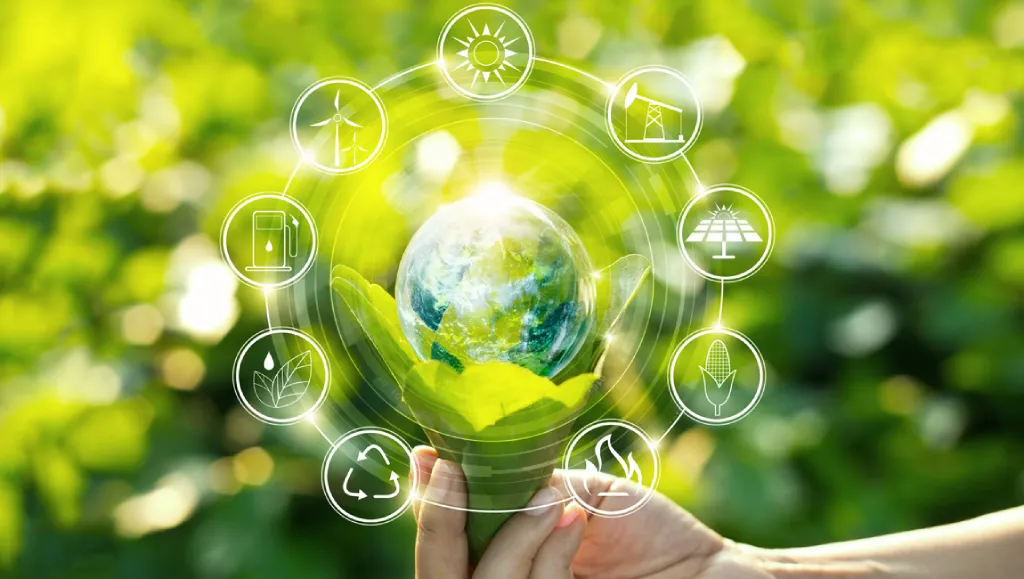
The global shift towards sustainable and renewable energy sources is no longer a buzzword but a reality and fundamental transformation is already reshaping the future of our planet. With the increasing awareness of environmental issues and the urgent need to mitigate climate change, the focus on renewable energy has gained significant momentum.
As the world grapples with the urgency of addressing climate change, the latest technologies and infrastructure advancements are playing a pivotal role in shaping a cleaner and more sustainable, safer and habitable Earth. Here we look into the key developments and trends that are driving the industry forward into the future.
Sustainability and Renewable Energy Initiatives Taking Place Globally
Advancements in Solar Technology
Solar energy continues to be a forerunner in the renewable energy sector, and there have been tremendous innovations in this area. One of the most promising developments is the rise of perovskite solar cells.
These cells, made of materials with the same structure as calcium titanium oxide, have shown remarkable efficiency improvements and cost reductions compared to traditional silicon-based solar cells. As research in this area progresses, perovskite solar cells could potentially revolutionize the solar industry.
Coming of artificial intelligence (AI) in solar technology further enhanced the efficiency of solar panels. AI algorithms can optimize the operation of solar plants by:
- predicting energy production,
- identifying potential faults, and
- adjusting the system in real-time to maximize energy output.
Wind Energy Innovations
Wind energy, another major player in the renewable energy sector, is witnessing notable innovations. Offshore wind farms are gaining traction due to their higher energy yield and reduced visual and noise impact on land. Advancements in floating wind turbine technology have opened up new possibilities for harnessing wind energy in deeper waters, expanding the potential locations for offshore wind farms.
The use of machine learning algorithms in wind turbine operations and maintenance has become a key trend. Predictive analytics can anticipate potential equipment failures, enabling proactive maintenance and reducing downtime. This improves the overall efficiency of wind energy systems, and lowers operational costs.
Energy Storage Breakthroughs
One of the critical challenges in renewable energy is intermittency, as sunlight and wind are not constant. Energy storage technologies play a pivotal role in addressing this issue. The development of advanced energy storage solutions, such as next-generation batteries and grid-scale storage systems, is a significant trend.
As of now, Lithium-ion batteries continue to dominate the market, researchers are actively exploring alternative materials and technologies to improve energy density, lifespan, and sustainability. Solid-state batteries, for example, offer the potential for higher energy storage capacity and safety compared to traditional lithium-ion batteries.
Flow batteries, solid-state batteries, and innovative thermal storage solutions are emerging as potential game-changers. These technologies offer higher energy density, longer lifespan, and improved safety, making them essential components in creating a reliable and resilient renewable energy infrastructure.
Hydrogen as a Clean Energy Carrier
Hydrogen emerged as a versatile and clean energy carrier that can play a crucial role in the decarbonization of various sectors. Green hydrogen, produced through electrolysis and powered by renewable energy sources, is gaining attention as a sustainable alternative to conventional hydrogen production methods.
Governments and industries worldwide are investing in the development of hydrogen infrastructure, including production, storage, and transportation. As advancements in electrolysis technology and hydrogen fuel cells progress, the role of hydrogen in achieving a carbon-neutral future is set to expand.
Countries and industries are investing in hydrogen infrastructure, including electrolyzers, hydrogen storage facilities, and transportation networks. The development of hydrogen hubs and pipelines is underway, creating a comprehensive ecosystem for the integration of hydrogen into the energy matrix and various industrial processes.
Smart Grids and Decentralized Energy Systems
Smart grids are transforming the traditional energy infrastructure. These incorporate advanced communication and control technologies, allowing for real-time monitoring, optimization, and management of energy distribution. This facilitates the integration of renewable energy sources into the existing power grid.
Decentralized energy systems, which empower individual consumers to generate, store, and manage their energy, are gaining popularity. Blockchain technology is being explored to enable secure and transparent peer-to-peer energy transactions, creating a more resilient and sustainable energy ecosystem.
Circular Economy and Sustainable Drive
Beyond technological advancements, a shift towards a circular economy and sustainable practices is shaping the overall approach to renewable energy. This involves a holistic perspective on resource management, waste reduction, and the lifecycle impact of renewable energy technologies.
Recycled and repurposed materials used in solar panels and wind turbines are becoming critical considerations. Innovations in eco-friendly materials and sustainable manufacturing processes are driving the industry towards a more environmentally conscious and responsible model.
Sustainability and Renewable Energy: Latest Technologies & Infrastructure Development
– Digitalization and Smart Grids
A transformative trend in renewable energy infrastructure is the convergence of digital technologies and power grids, giving rise to smart grids. These smart grids, leverage advanced communication and control systems to optimize the generation, distribution, and consumption of electricity, enabling real-time monitoring, predictive maintenance, and efficient utilization of renewable energy resources.
Deploying smart meters allows consumers to actively participate in energy management by providing real-time information on their energy consumption. Additionally, smart grids facilitate the seamless integration of renewable energy sources, such as solar and wind, into the existing grid infrastructure, overcoming challenges related to intermittency and grid stability.
– Energy Storage Advancements
Effective energy storage is a linchpin for the widespread adoption of renewable energy. Recent developments in energy storage technologies address the intermittency issues associated with solar and wind power. Lithium-ion batteries have dominated the energy storage market, but ongoing research is exploring alternative materials and configurations to enhance performance and reduce costs.
– Grid-Scale Energy Storage
As renewable energy capacities increase, the demand for grid-scale energy storage solutions is escalating. Grid-scale storage facilities, such as pumped hydro storage, compressed air energy storage, and large-scale battery installations are important in balancing supply and demand on the power grid.
Plans of mega-scale energy storage projects are are also taking shape and driving forward which benefits in storing excess renewable energy during periods of high production and release when demand is high. These projects are aimed towards grid stability, lessen-down reliance on fossil fuel-based peaker plants, and contribute to a more flexible and responsive energy infrastructure.
– Blockchain for Energy Transactions
Blockchain technology also made its way into the renewable power sector by providing a decentralized and transparent platform for energy transactions. Blockchain-based smart contracts enable peer-to-peer energy trading, allowing consumers with renewable energy sources, such as solar panels, to sell excess energy directly to their neighbors or the grid.
By eliminating intermediaries and ensuring traceability, blockchain enhances the efficiency and accountability of energy transactions. This technology supports the decentralization of energy production as well as fosters community-based sustainability initiatives.
– Internet of Things (IoT) in Renewable Energy
The Internet of Things (IoT) has revolutionized monitoring, control and optimization of renewable energy systems. IoT-enabled sensors and devices collect real-time data from renewable energy assets, allowing for precise performance monitoring and predictive maintenance.
In solar energy, IoT facilitates tracking of sunlight exposure and the efficiency of solar panels. For wind energy, sensors on turbines monitor wind speed, direction, and turbine health. This data is then processed using artificial intelligence (AI) algorithms to enhance overall system efficiency, reduce downtime, and optimize energy output.
– Hydrogen Infrastructure Development
The role of hydrogen as a clean energy carrier is gaining prominence, and infrastructure development is crucial for its widespread adoption. Green hydrogen, produced through electrolysis powered by renewable energy, requires a dedicated infrastructure for production, storage, and distribution.
– Sustainable Infrastructure
Sustainable practices, such as recycling and repurposing materials from decommissioned solar panels and wind turbines, are gaining importance. Infrastructure projects are increasingly adopting eco-friendly materials and construction practices to minimize environmental impact. Nature-based solutions, such as green roofs and biodiversity-enhancing designs, are becoming a standard practice in the development of renewable energy infrastructure.
As governments, industries, and communities continue to invest in these transformative technologies, the vision of a low-carbon world powered by renewable energy is steadily becoming a reality. Staying informed and welcoming these transformational trends is crucial for all stakeholders involved in shaping the future of sustainable energy.

